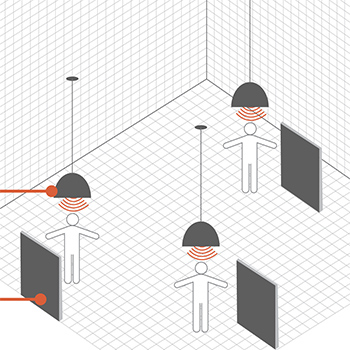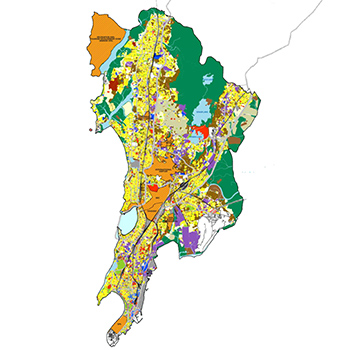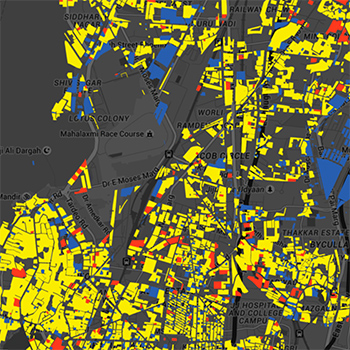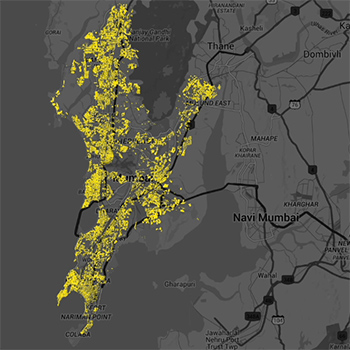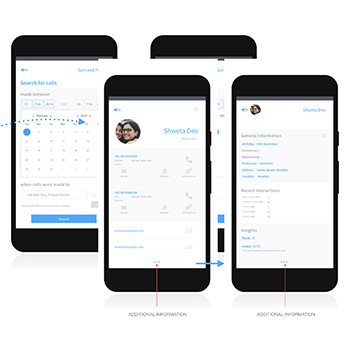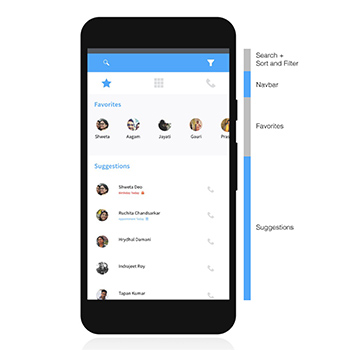With the advent of smartphones and social media it is common to have over a one thousand contacts in one’s phonebook. There is a problem of information design for management of contacts since the modern phonebook contains phone numbers as well as details for other mediums of communication such as email, Facebook, WhatsApp, etc. Despite the advancement in computing power of our phones, our phonebooks have been slow to adapt. Most current phonebooks are based on the same design of the phonebook for a feature phone. In the vast sea of contact information, how does one find which are the most relevant contacts? Data from Primary studies, user studies and secondary research points heavily towards the Pareto Principle which suggests that only 20% of the information is important. The same principle can be applied to the task of contact visualization as well. Importance of a contact can be determined from usage patterns of calling, location information as well as personal details of the contact. This context aware data can be used for contact suggestion. It was found in the primary and secondary research that certain features of the phonebook such as favorites and groups are redundant and not many users seem to be using them. A preliminary design was created which augmented the structure of the existing phonebook with a contact suggestion widget. The suggestions in the widget are updated periodically based on the user’s location, time, day and date. A heuristic evaluation of the idea presented the need to use realistic data. Problems were found with navigation in the existing phonebook and the text input based search of contacts was found to be redundant. It was also thought that the suggestions widget might be beneficial in scenarios when a very small screen real estate is available in the case of wearable devices. The phonebook could also encourage exploration of contacts. The Phonebook is a ubiquitous application in the smartphone and redesign of the phonebook need not be a complete overhaul. A final idea was developed through a series of smaller design interventions in the navigation, microinteractions and the user interface of the phonebook application. The concept named ‘PhonBk’ was designed around the goal of finding the most important contact at the moment. This is done by means of a suggestion widget in the home screen of the application, a frequency based suggestion in the contact list and an advanced navigation feature which enables filtering and sorting of the call log. An evaluation was conducted with 7 users to check for the accuracy of suggestion of contacts and the advanced navigation feature was evaluated for its usability. It was found out that the suggestions of contacts was fairly accurate, however the usability of the same needs to be tested. In case of the advanced navigation feature, it was found that users faced great difficulty in the usability. The advanced navigation feature was redesigned based on the inputs from the usability evaluation. The PhonBk project is an attempt to re-design the phonebook application which is already ubiquitous across all current smartphones. The project attempts to make important incremental improvements in the current phonebook by means of smarter suggestions based on the context of the user, through an advanced sorting and navigation feature and other design interventions in the visualization as well as organization of contacts. The end goal is to make improvements in the fundamental task of finding the most relevant contact at any moment.
